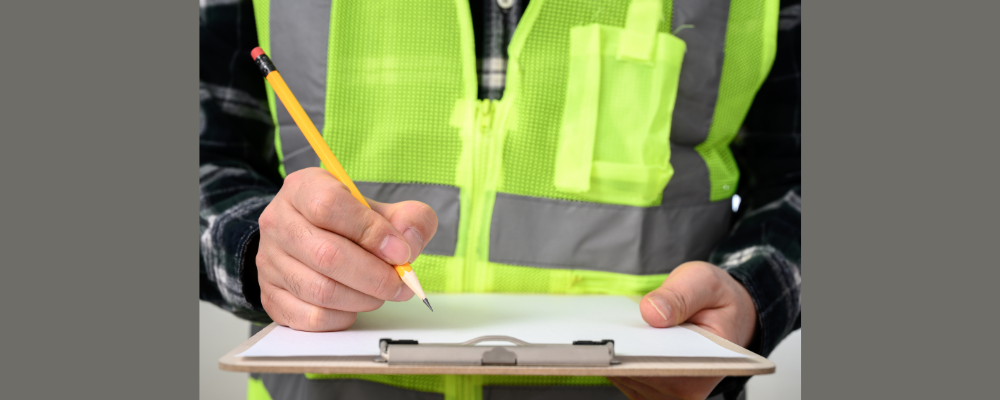
Introduction
In the dynamic and high-risk domain of construction, safeguarding the well-being of workers and the structural integrity of projects remains a non-negotiable priority. Adherence to stringent safety protocols and regulatory compliance forms the cornerstone of a secure construction environment. Verification tags emerge as indispensable aids, wielding a profound influence on ensuring safety and the sustained upkeep of equipment and structures within this industry.
Importance of Verification Tags for Construction Workers
The essence of construction safety lies in the meticulous maintenance of equipment and adherence to prescribed safety standards. Within this context, Brady® Inspection Record Tags emerge as a pivotal instrument, offering a multifaceted approach to maintaining the safety and functionality of construction equipment.
Implementing Brady® Standard Scaffold Status Tags
Utilizing Verification Tags effectively involves a structured approach:
- Training and Awareness: Conducting comprehensive training sessions to educate workers on the significance of these tags and their interpretations is vital.
- Regular Inspections: Instituting a routine for scaffold inspections ensures that any safety concerns are promptly identified and addressed, reflected through updates on the status tags.
- Integration with Safety Protocols: Integrating these tags into existing safety protocols establishes a seamless process for scaffold safety management.
Brady® Standard Scaffold Status Tags are safety beacons within construction sites utilizing scaffolding. Their role in visually communicating scaffold safety status, maintaining compliance, and streamlining safety procedures cannot be overstated. By embracing these Verification Tags, construction sites elevate their safety standards, safeguard workers, and enhance operational efficiency.
Ensuring Equipment Integrity with Brady® Inspection Record Tags
Brady® Inspection Record Tags stand as a testament to the unwavering commitment and attention to detail in construction safety. These tags transcend the mere role of identifiers; they are comprehensive tools meticulously designed to assist construction workers in conducting thorough inspections. Their primary objective is to ensure that every piece of equipment undergoes regular scrutiny, guaranteeing that it remains in optimal condition and safe for operational use.
At the crux of their functionality lies the capacity to facilitate systematic inspections. Construction workers utilize these tags to record vital inspection data such as dates, details of inspections performed, and the condition of the equipment. This information forms an invaluable repository, enabling workers to track maintenance schedules, identify potential issues, and address them promptly. Consequently, the Brady® Inspection Record Tags serve as guardians of equipment integrity, preventing the occurrence of malfunctions or accidents due to neglect or oversight.
In essence, Brady® Inspection Record Tags transcend the conventional concept of labels; they represent an intricate system that empowers construction workers to uphold safety standards and equipment functionality, thereby fostering an environment where safety is not just a practice but a way of life in the construction industry.

Monitoring Scaffold Safety with Brady® Standard Scaffold Status Tags
Construction sites heavily reliant on scaffolding demand meticulous safety protocols to prevent accidents and ensure the well-being of workers. Brady® Standard Scaffold Status Tags emerge as a crucial element in maintaining safety and operational efficiency within these environments.
Moreover, Verification Tags act as silent sentinels, instilling confidence in construction workers by affirming the reliability of the equipment they handle. Through the visual cues provided by these tags, workers swiftly discern the equipment status, ensuring they are deploying only the safest and most meticulously maintained tools and machinery in their daily tasks.
Role of Brady® Standard Scaffold Status Tags
Brady® Standard Scaffold Status Tags offer a systematic and easily recognizable method to communicate the safety status of scaffolding structures. Their importance lies in their ability to:
- Visual Indication: Verification Tags provide a clear visual indicator of the current safety status of the scaffolding. Color-coded systems or standardized symbols on the tags swiftly convey crucial information to workers and supervisors alike.
- Standardized Communication: By adopting a universal system through these tags, construction sites ensure a consistent understanding of scaffold safety across various teams and individuals involved in the project.
- Real-time Updates: Tags can be easily updated to reflect changes in the scaffold status, facilitating immediate awareness among workers, supervisors, and safety inspectors.
- Compliance Adherence: They help sites comply with safety regulations by ensuring that safety inspections and necessary measures are visibly documented and followed.
Importance of Scaffold Safety Monitoring
Scaffolding is a fundamental construction structure, offering access and support for workers across various heights. However, its use inherently carries risks, making continuous monitoring imperative to avert potential hazards.
Longevity and Reliability: Metal 4-Year Inspection Tags
Metal 4-Year Inspection Tags are engineered to withstand harsh conditions prevalent in construction environments. These tags boast exceptional durability, making them ideal for extended equipment monitoring. The prolonged four-year lifespan ensures a consistent tracking mechanism for equipment, minimizing the need for frequent replacements.
Key Features:
- Durability: Constructed from robust metal, these tags resist corrosion, abrasion, and weathering.
- Long-Term Monitoring: Designed for extended use, providing a continuous record of equipment inspections and status over four years.
- Reliability: Their sturdy build ensures that crucial inspection data remains intact and visible throughout their lifespan.
Lockout Tags for Hazard Prevention – Honeywell Styrene Lockout Tags
Honeywell Styrene Lockout “Do Not Operate Tags” acts as a critical safety barrier by preventing unauthorized use of machinery or equipment. These tags are pivotal in hazard mitigation, significantly reducing the risk of accidents and injuries in construction settings. They serve as visual cues, communicating vital safety information to workers and signaling equipment unavailability.
Key Features:
- Preventative Safety: Effectively prevents accidental or unauthorized operation of machinery or equipment, reducing potential hazards.
- Visual Alert: The distinct “Do Not Operate” message in red/black/white serves as a warning to personnel.
- Compliance Assurance: Aligns with safety regulations, ensuring adherence to protocols established by OSHA and industry-specific guidelines.

Plastic One-Year Inspection Tag: Lightweight and Effective Monitoring
The Plastic One Year Inspection Tag offers a lightweight yet robust solution for short-term equipment inspections in construction. These tags are designed for efficiency and ease of use during routine inspections. They facilitate a systematic approach to monitoring equipment over shorter intervals, ensuring regular checks are conducted without added complexity.
Key Features:
- Efficient Monitoring: Specifically designed for shorter-term inspections, providing a concise record of equipment status over one year.
- User-Friendly: Lightweight and easy to handle, allowing for swift application and removal during inspections.
- Clear Identification: Denotes inspection dates and pertinent information, aiding in visual tracking and record-keeping.
How Verification Tags Improve Safety and Compliance
Verification tags play a pivotal role in enhancing safety and compliance within construction sites by streamlining procedures and ensuring adherence to regulations:
- Regulatory Compliance: Verification tags assist in meeting the stringent standards outlined by OSHA and industry-specific guidelines, ensuring legal compliance.
- Risk Mitigation: By effectively monitoring equipment and employing lockout tags, the risk of accidents and hazards is substantially reduced.
- Maintenance Tracking: These tags facilitate scheduled inspections, enabling maintenance teams to track equipment status efficiently.
- Visual Communication: They offer an immediate visual cue to workers regarding equipment status, promoting a safer work environment.
Best Practices for Implementing Verification Tags
Training and Awareness
Construction workers play a pivotal role in maintaining safety standards on-site. Therefore, educating them about the significance of verification tags and their proper utilization is fundamental. This training should encompass:
Importance Emphasis:
- Safety Awareness: Highlight the correlation between verification tags and on-site safety.
- Compliance Significance: Explain how tags align with regulatory requirements and industry standards.
- Visual Communication: Illustrate how tags serve as visual cues for equipment status.
Hands-on Training:
- Proper Tag Application: Demonstrate the correct tagging procedures for different equipment types.
- Interpretation Skills: Teach workers how to understand and respond to tag information.
Interactive Sessions:
- Q&A Sessions: Address queries and clarify doubts regarding tag usage.
- Case Studies: Present real-life scenarios showcasing the impact of accurate tag implementation.
Regular Inspections and Record-Keeping
Establishing a routine for inspections and maintaining comprehensive records is a cornerstone of effective verification tag implementation. This practice fosters accountability, safety, and equipment maintenance.
Scheduled Inspections:
- Routine Checks: Define a consistent schedule for equipment inspections based on manufacturer guidelines and regulatory requirements.
- Thorough Assessments: Ensure inspections cover all necessary aspects of equipment safety.
Record-Keeping Protocols:
- Digital or Physical Logs: Maintain detailed records of inspections, including dates, findings, corrective actions, and personnel responsible.
- Accessibility: Ensure easy access to records for audits, monitoring, and future reference.
Accountability Measures:
- Assigned Responsibilities: Designate specific individuals or teams responsible for inspecting and updating records.
- Review Mechanisms: Implement periodic reviews of inspection processes to identify areas for improvement.
Integration with Safety Protocols
Integration of verification tags into existing safety protocols streamlines adherence and enhances overall efficiency in ensuring workplace safety.
Protocol Alignment:
- Incorporate Tags into Procedures: Modify safety protocols to include verification tag usage as an essential step.
- Training Updates: Update safety training modules to include information about tag integration.
Visual Signage and Communication:
- Consistent Communication: Use standardized tag systems for clear and uniform communication.
- Supplemental Signage: Employ additional signage to reinforce tag information where necessary.
Continuous Improvement:
- Feedback Mechanisms: Encourage workers to provide feedback on tag implementation for continuous improvement.
- Adaptability: Revise protocols based on evolving safety regulations and industry best practices.
By implementing these best practices, construction sites can effectively utilize verification tags, fostering a culture of safety, compliance, and proactive equipment maintenance.
For more information, visit our Facebook page.
And for more products, visit our website
Brady® Standard Scaffold Status Tags
Honeywell Styrene Lockout “Do Not Operate Tags”, Red/Black/White, 25/Pkg
Plastic One Year Inspection Tag
Conclusion
First and foremost, using Verification Tags protects against potential hazards. Verification Tags aren’t merely pieces of material; they are guardians of safety and are responsible for communicating critical information about equipment, structures, and areas within the site. From the durable Brady® Inspection Record Tags to the specialized Honeywell Styrene Lockout “Do Not Operate Tags,” each serves as a sentinel, signaling the status, compliance, and safety measures necessary for a secure environment.
Verification tags are indispensable in the construction industry, ensuring safety, compliance, and integrity. Construction workers elevate workplace safety standards by incorporating these tags into daily operations.









